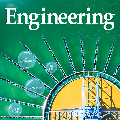Traditionally, the detection of fraudulent insurance claims relies on business rules and expert judgement which makes it a time-consuming and expensive process (\'Oskarsd\'ottir et al., 2022). Consequently, researchers have been examining ways to develop efficient and accurate analytic strategies to flag suspicious claims. Feeding learning methods with features engineered from the social network of parties involved in a claim is a particularly promising strategy (see for example Van Vlasselaer et al. (2016); Tumminello et al. (2023)). When developing a fraud detection model, however, we are confronted with several challenges. The uncommon nature of fraud, for example, creates a high class imbalance which complicates the development of well performing analytic classification models. In addition, only a small number of claims are investigated and get a label, which results in a large corpus of unlabeled data. Yet another challenge is the lack of publicly available data. This hinders not only the development of new methods, but also the validation of existing techniques. We therefore design a simulation machine that is engineered to create synthetic data with a network structure and available covariates similar to the real life insurance fraud data set analyzed in \'Oskarsd\'ottir et al. (2022). Further, the user has control over several data-generating mechanisms. We can specify the total number of policyholders and parties, the desired level of imbalance and the (effect size of the) features in the fraud generating model. As such, the simulation engine enables researchers and practitioners to examine several methodological challenges as well as to test their (development strategy of) insurance fraud detection models in a range of different settings. Moreover, large synthetic data sets can be generated to evaluate the predictive performance of (advanced) machine learning techniques.
翻译:暂无翻译




